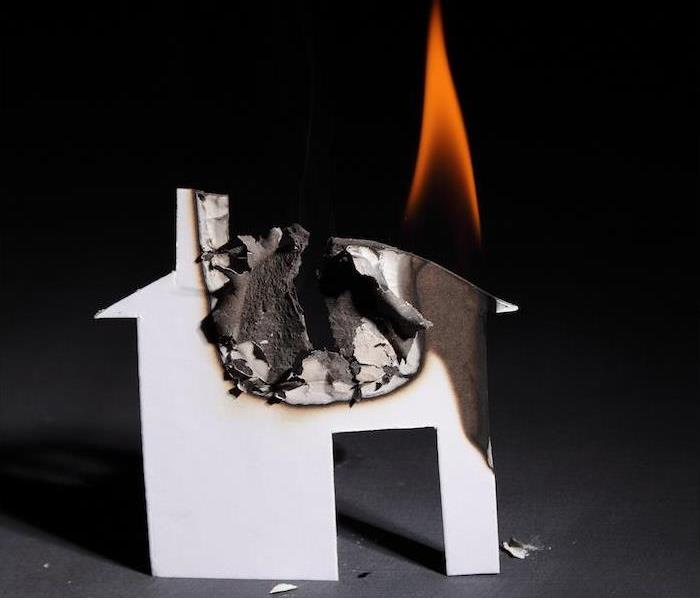Starting and Stopping a Fire Involve the Same 4 Elements | SERVPRO® of Eastern Rockland County
1/25/2022 (Permalink)
 If your home or business has any damage, SERVPRO of Eastern Rockland County is ready around the clock to help you recover.
If your home or business has any damage, SERVPRO of Eastern Rockland County is ready around the clock to help you recover.
Squares and circles get most of the glory when it comes to geometric shapes (honorable mention to the rhombus), but when it comes to fire theory, the story begins and ends with the 3-D triangle called the tetrahedron.
Having four equal sides makes fire tetrahedron the perfect shape to explain how fires get started, because every fire requires the same four things to happen in tandem.
The 4 Things a Fire Needs to Live
Fuel. Think about this in the sense of fueling an old train engine by adding logs or coal. Any fire has to have something to devour, and that can range from dry leaves in your yard to the insulation behind your walls.
Heat. Remember using a magnifying glass to harness sunlight and catch pieces of paper on fire? That wasn’t just us, was it? The glass causes the sun’s heat to focus on the paper’s surface until it reaches a point at which it combusts. Until a material reaches that point, it won’t catch fire.
Oxygen. Fires have to consume oxygen, and the oxidation process both releases heat and generates more combustible gases, thus contributing to…
Chemical Chain Reaction. The continuation and growth of a fire depends on a chain reaction, which must be allowed to repeat and feed itself as the other three elements continue to be absorbed and utilized.
The 4 Ways to Stop a Fire
Cool it. If we polled 100 people and asked them the top way to start a fire, the survey would likely say, “Pour water on it.” Pouring water on the fuel source cools it and restores the thermal balance at which combustion becomes impossible.
Smother it. Fire blankets can stop a small fire almost instantly. Stamping out an errant spark from a bonfire or covering a grease fire with a pan lid—these all work by separating a fire from its oxygen supply, thus smothering it.
Starve it. Fires that have no fuel sources cease to be fires, because they have to have something to consume. Once consumption ends or the fuel source is removed, the fire dwindles and stops burning.
Interrupt the chain reaction. A gas called halon, though it’s now banned from production, proved incredibly effective in fighting fires by disrupting the chemical reaction that promotes combustion. Other halon replacements continue to be in use, and they are especially handy in that they are “clean” solutions that leave no residue and don’t conduct electricity.
If the fire tetrahedron makes a wreck of your home or business, we’re ready around the clock to help you recover. Contact SERVPRO anytime for fast, thorough cleanup and recovery after a fire.




 24/7 Emergency Service
24/7 Emergency Service